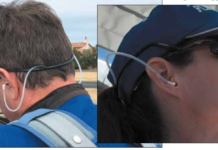Weve never come right out and said this in print, but everyone knows that many pilots and owners are bald-faced liars when it comes to how fast their airplanes really fly.
For our Used Aircraft Guides, we routinely see 160-knot Piper Arrows and light twins that blaze along at 200 knots, the explanation being that although the POH says otherwise, mine is faster than the book. For some pilots, the laws of physics that govern the rest of us seem not to apply.
Call Us Skeptical
Accordingly, weve become hard-bitten cynics with regard to speed claims. Our experience is that some airplanes meet the POH claims, many fall short by a little or a lot and precious few unmodified airplanes fly faster than the book says they should. Reader Robert Keller of Lexington, Kentucky, recently pulled us up short concerning our speed assessment of the Mooney 201 in the May, 2004 issue of Aviation Consumer.
In your recent used aircraft review of the Mooney 201, he writes, you had indicated some skepticism regarding the TAS values in the range of 160 to 163 Knots. I understand your skepticism, but I would like to submit the following values obtained with GPS on four cardinal headings that I have obtained with my aircraft.
Keller explains that to accurately measure the speed of his Mooney 201, he used the popular method of running a three or four-leg course and plugging the resultant GPS groundspeeds on each leg into a reverse wind triangle. You can do the same thing with an E6B but GPS and simple formulas available on the Web make it easier and more accurate.
These values were determined with the autopilot holding the cardinal heading and the altitude and the groundspeed values were obtained from both a panel-mount Garmin AT CNX80 and a handheld Garmin GPSMap 295 (I always fly with a back-up). This eliminates the calibration errors in the airspeed indicators.
Reverse Triangle
The results and the basic concept of this method are explained in the graphic below. I do this test regularly after any significant maintenance, such as annual inspections or alterations. The disappointing airspeeds that others may get may be due to poor rigging by maintenance shops, another reason to use only Mooney authorized service centers for annuals, Keller adds.
While we agree with his assessment and we think its a good idea to perform speed tests periodically, we stand by our view that most 201s don’t fly this fast, although weve seen a couple that do.
However, feel free to prove us wrong by running your own speed calibration. By the way, we occasionally use this method when flying flight trials for aircraft we evaluate for Aviation Consumer. Although we cant vouch for the accuracy of all the formulas given here, theyre good enough for a better-than-a-rough-gouge check of the POH numbers.
Also With This Article
“Real World Speed Check”




